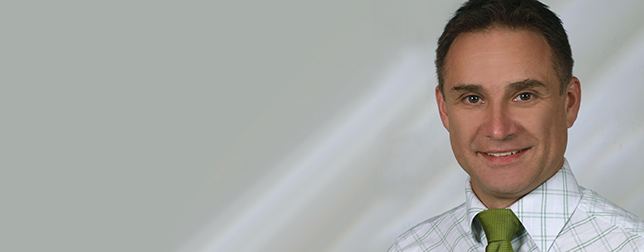Martin Weigert is General Manager Industrial Fiber Optics at Avago Technologies. There have been quite a lot of optical sensor technologies popping up on the Wearable Technologies market lately. Avago offers sophisticated solutions in this area. Learn more about the technology below in our interview with Mr Weigert.
1. Optical sensors – what are they, and what are their advantages compared to other sensor technologies?
One advantage of optical sensor technologies is that they essentially work without direct contact. Additionally, light can penetrate the skin at different depths depending on wave length and intensity, and information can then be derived then from the backscattered light signals. Low-cost LEDs can be used to create different wave lengths and convert them into electrical signals with the help of mainly silicium-based receivers.
The technology developed by Avago is a silicium-based receiver that includes an integrated circuit which amplifies the signals and interprets them digitally. This improves the signal/noise ratio significantly and enables smaller and more accurate sensors to be built.
2. What are the main areas of application for this technology and where do you see future opportunities?
Today optical sensors are used in the medical field, for example to measure blood oxygen level – usually via fingertip sensors with integrated LEDs. Other examples are finger pulse oximeters which are capable of relatively accurate pulse measurement. Furthermore, optical sensors are known for measuring body temperature, for example inside the ear. Yet these are just a few examples.
Improved and more accurate sensors will make new applications possible in future, for example in sports medicine, as well as providing easy and convenient 24/7 monitoring for prevention purposes.
A long-term ECG combined with modern signal processing will allow conclusions to be drawn on the “black box” of human beings. This will also make it possible, one day, for improved treatments or everyday lifestyle tips to be derived in order to prevent high stress-levels or burn-out, for example. Optical sensors will definitely play a role in the field of Wearable Technologies. The clever combination of different technologies will be the major challenge here.
3. So optical sensors can also be used in wearable technologies? Do they have any limitations in terms of health risks?
As far as I know, the above-mentioned optical sensors do not entail any health risk, even in a long-term use scenario. In order to obtain highly accurate signals, body temperature is important as well as whether the person is moving or resting. Wearable Technologies can help to combine different sensors and to keep the connection between these comfortable and stable, even during exercise.
Sensors are like ears and eyes: they capture all discernible signals, even those that that are not necessarily desirable, such as background noise or dazzling sunlight. The art here is to eliminate disruptive noise or to suppress it – this is what Wearable Technologies can help to improve.
4. Is your company already involved in a Wearable Technologies project?
I know of an “open hardware” product which uses a proximity sensor by Avago for a pulse oximeter. We at Avago provide enabling technologies for Wearable Technologies products and would be happy to talk to you about our available solutions.
5. What is your favourite Wearable Technologies product?
As a skiing enthusiast, I like WT products that send out signals in case of an avalanche accident, which will enable me to be found more easily. There are, incidentally, a number of apps for the iPhone that use the device’s camera. By simply putting your finger on the camera you can optically measure your pulse. One example is “Cardiograph”. Have fun with it!












